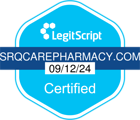SPORTS MEDICINE COMPOUNDING
By Michael Klein
Medically reviewed by Rosanna Sutherby, PharmD
When injuries are as common as they are in professional sports, athletes and sports physicians are constantly looking for treatments that minimize downtime and maximize recovery. While commercially available drugs do help, many athletes work with compounding pharmacists to get back on the field quickly and safely.

What Is Compounding?
Compounding is a process in which a pharmacist or other licensed practitioner combines or changes a drug to meet your specific treatment needs. Examples of compounding might include formulating an oral medication as a topical one or altering the dose or drug concentration to a form that’s not commercially available.
Sports medicine compounding is in high demand, and compounding pharmacists work with athletes, coaches, and sports physicians to develop customized treatment plans depending on the injury and the athlete’s medical history. During recovery, the compounding pharmacist can closely monitor the athlete’s response to a particular medication treatment and adjust the formulation as needed.
Who Can Benefit From Sports Medicine Compounding?
There are many reasons why people turn to compounded drug treatment. Sports medicine compounding is especially helpful for athletes who:
- Have drug allergies, sensitivities, or tolerances.
- Are undergoing multiple drug treatments at once.
- Need frequent dose adjustments during the course of treatment.
- Need or prefer a particular delivery form, such as a cream or a patch.
While many patients are professional athletes and coaches, compounding pharmacists are seeing more non-professional athletes and rehabilitation patients, all of whom can also benefit from sports medicine compounding.
The Advantages of Sports Medicine Compounding
Compounded Medications Provide More Options for Treatment
Compared to commercial medications, compounded medications can be precisely adjusted to a particular dose, absorption rate, and administration method. The resulting formulation can be designed to treat your specific treatment needs.
A good example of this is ketoprofen. When compounded as a topical formulation, ketoprofen is proven to be more effective compared to conventional oral anti-inflammatory treatment. Because the topical formulation targets the area of inflammation, it’s possible to use higher concentrations of ketoprofen to increase effectiveness.
Compounded Medications Are Formulated With the Athlete in Mind
Differences between athletes go beyond weight, build, and age. Every athlete has unique drug tolerance levels, injury types, and allergies that affect how they’ll react to a particular medication treatment.
Compounding pharmacists are able to take these factors into account and develop formulations that work best for each athlete. Over the course of the treatment, the athlete’s physician can closely monitor the recovery process and work with the pharmacist to adjust the formulation as needed.
Compounding Can Combine Medications That Work Together
A compounding pharmacist may be able to combine multiple medications that work together or in parallel. For example, a sunblock might be formulated to contain anti-fungal as well as anti-blister medication. Or a topical anti-inflammatory cream might be compounded with a penetration enhancer to improve skin absorption.
In addition, some medications provide synergistic effects when used together. Compounding pharmacists can develop formulations to take advantage of these properties to further increase the effectiveness of the treatment and reduce your recovery time.
Compounding Can Help Manage Side Effects
Although every drug has side effects, compounding pharmacists can develop formulations that mitigate the side effects that have the most impact on athlete performance.
For example, most commercial pain medications cause drowsiness, which makes them unsuitable for use before a game or competition. When taken orally, they also can cause gastrointestinal (GI) distress as they pass through the digestive tract. However, as a topical preparation, the same medication bypasses the GI tract altogether. The targeted application also minimizes side effects, such as drowsiness and dizziness.
When Do You Use Compounding in Sports Medicine?
Sports medicine compounding is typically used to treat:
- dehydration and rehydration
- dry skin
- fungal infections
- inflammation
- lacerations
- nutritional deficiencies
- repetitive stress injuries
- sprains
- tendonitis
Sports Medicine Compounding Gives You More Control
When you’re a serious athlete, you improve your performance with customized fitness routines and nutrition plans developed by experienced professionals. Sports medicine compounding adds the same level of customization to your medical care. A compounding pharmacy can help develop a tailored medication treatment plan that helps you recover more effectively and perform at the highest possible level on competition day.
About Author:
Michael Klein is a freelance sport and fitness writer. While he was a local running club track coach, he worked with athletes recovering from sports injuries and held workshops on injury prevention.
References:
- Sardana V, Burzynski J, Zalzal P. Safety and efficacy of topical ketoprofen in transfersome gel in knee osteoarthritis: A systematic review. Musculoskeletal Care. 2017 Jun;15(2):114-121. doi: 10.1002/msc.1163.
- Roy N, Agrawal M, Chaudhary S, et al. Review article on permeation enhancers: A major breakthrough in drug delivery technology. Int J Pharm Sci Res 2017; 8(3):1001-11. doi: 10.13040/IJPSR.0975-8232.8(3).1001-11.
- Bassani AS, Banov D. Evaluation of the percutaneous absorption of ketamine HCl, gabapentin, clonidine HCl, and baclofen, in compounded transdermal pain formulations, using the Franz finite dose model. Pain Medicine. 2016 Feb;17(2):230-238. doi: 10.1111/pme.12899.
